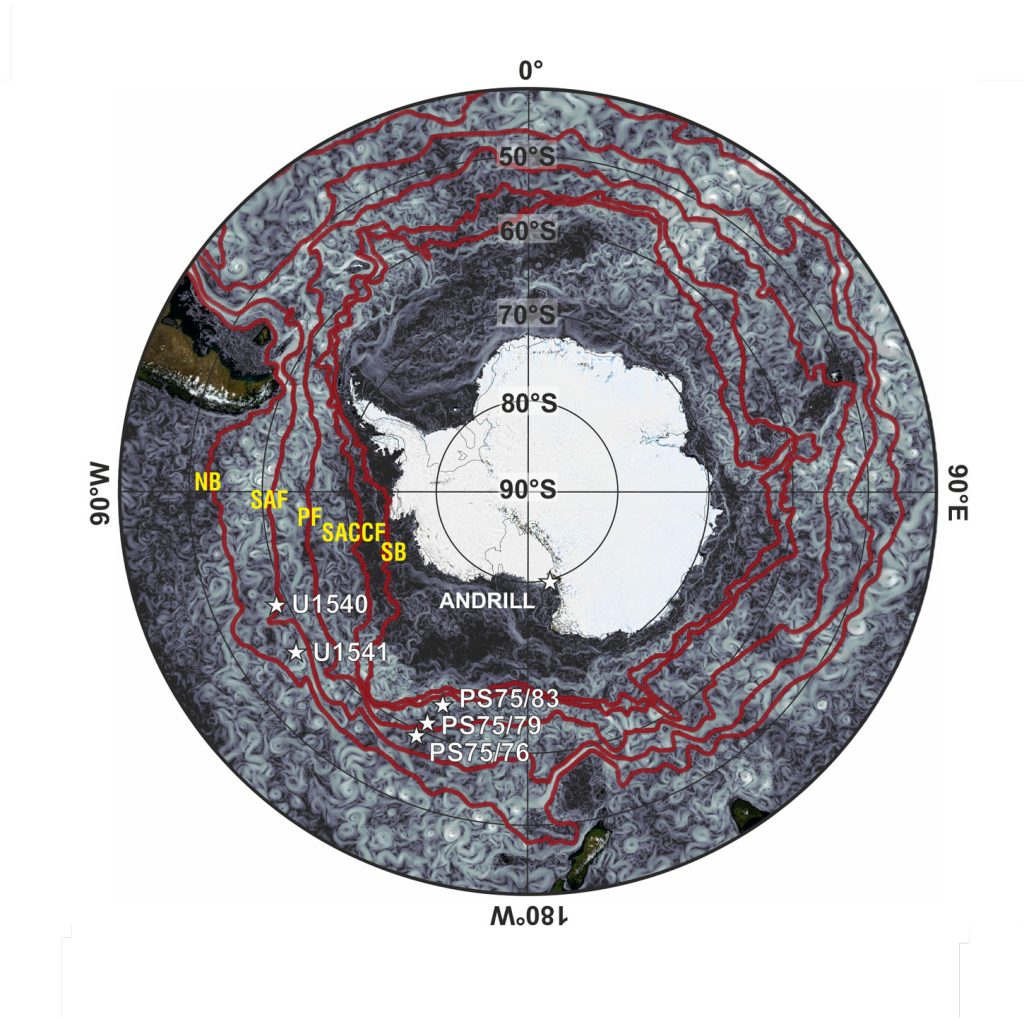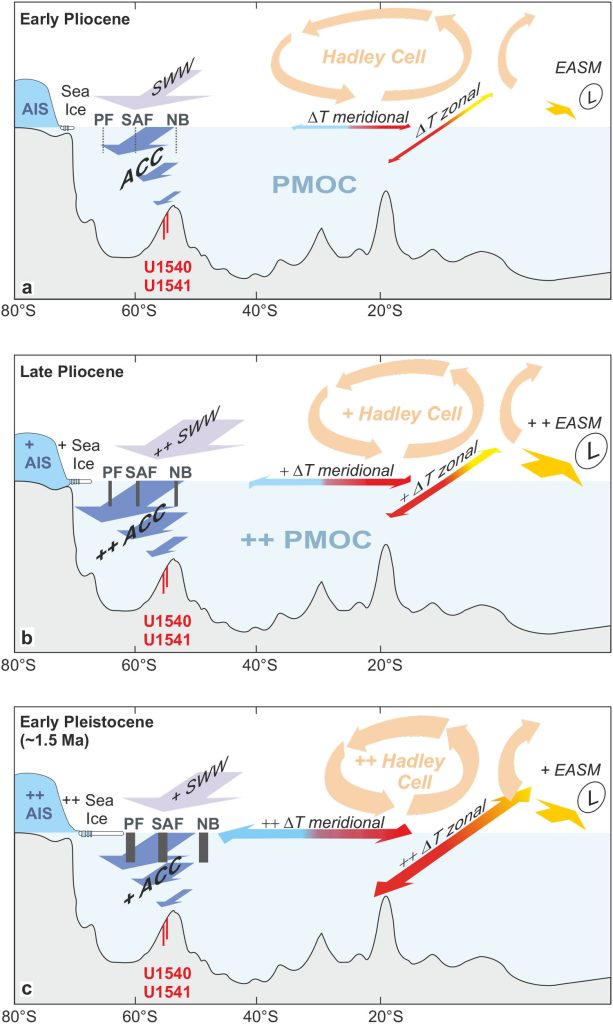The tumultuous life of the Antarctic Circumpolar Current over 5,3 million years, including focus on the glacial-interglacial forcing!
To reconstruct the strength of the Antarctic Circumpolar Current (ACC) and shifts of the Southern Ocean frontal system over the past roughly 5.3 Myr, the authors used sediment records – and sortable silt as proxy for near-bottom water-velocity variations_ from the pelagic central and remote South Pacific Ocean.
Over the Pleistocene scale, they compared down-core records north–south across the ACC over the past three glacial cycles (0–350 ka). The data revealed that, relative to the Holocene mean, glacial ACC strength was reduced by about 30–50% in the Subantarctic Zone, about 20–30% in the Polar Frontal Zone (PFZ) and at the Polar Front (PF) and about 20% in the Antarctic Zone (AZ), whereas ACC strength during interglacial Marine Isotope Stage (MIS) 5 and MIS 7 slightly exceeded the Holocene levels. The authors also discuss the opal content fluctuations in the same cores, characterized by strongly increased opal contents across the Subantarctic Front (SAF) and the PF and reduced opal deposition in the AZ during glacials compared with interglacials.
On a longer timescale, over the past 5.3 Myr, the sediment records document large variations in ACC strength, between roughly 50% and 180% of the mean Holocene ACC flow. Surprisingly, they show that after an ACC strength maximum in the Late Pliocene (about 3.0 Ma), ACC strength broadly declines, in opposition to expectations from continued Early Pleistocene cooling and ice-volume expansion. These contrasting trends indicate that the ACC responded to fundamentally different forcings in the Pliocene versus the Early Pleistocene…to read and understand more, see the figures below…


Reference:
Lamy, F., Winckler, G., Arz, H.W. et al. Five million years of Antarctic Circumpolar Current strength variability. Nature 627, 789–796 (2024). Access the paper: 10.1038/s41586-024-07143-3
